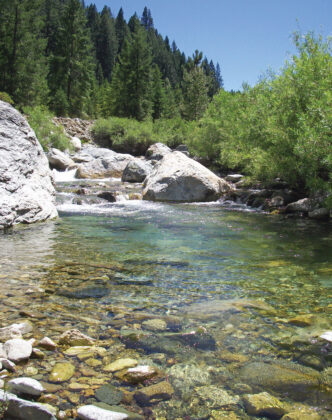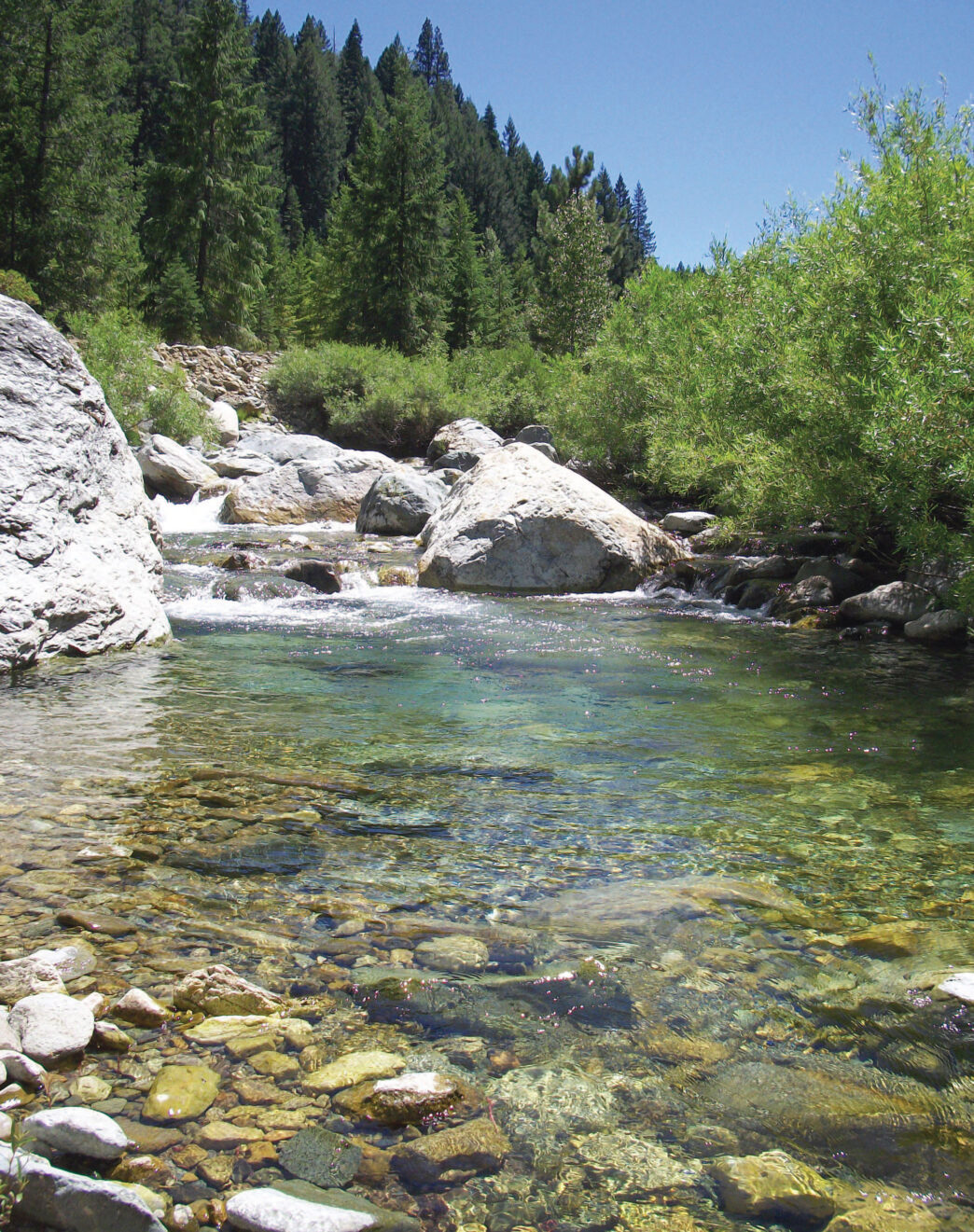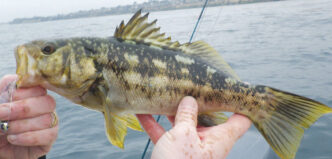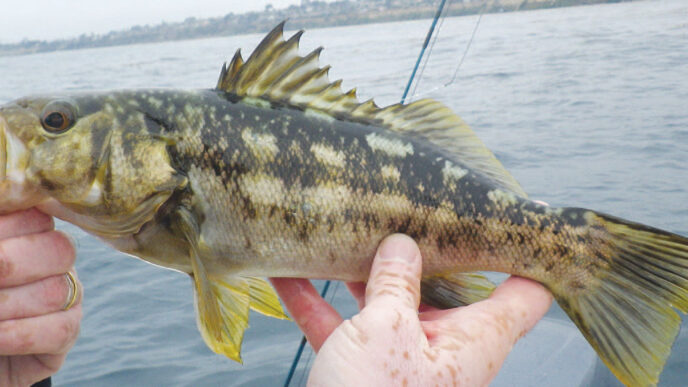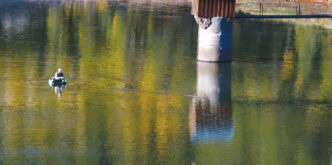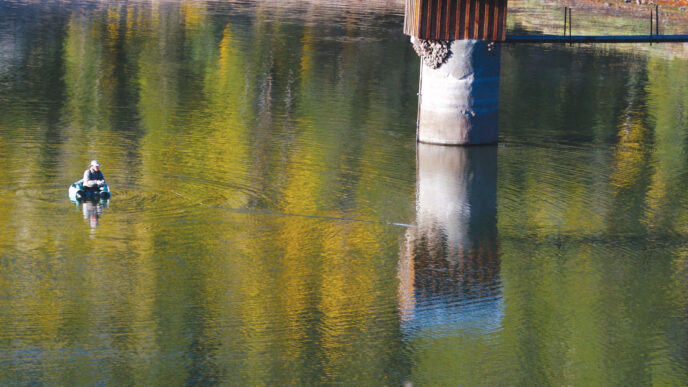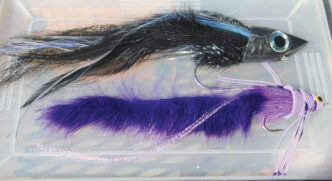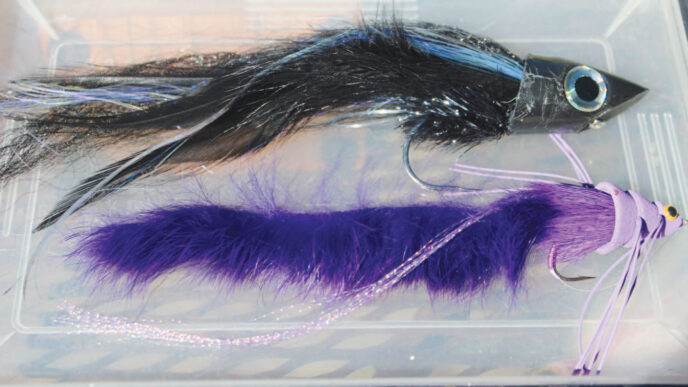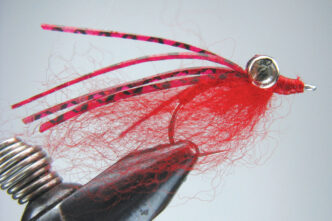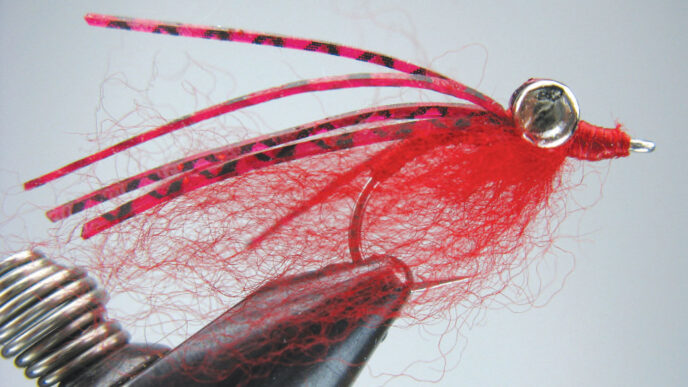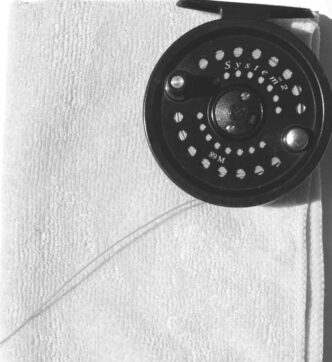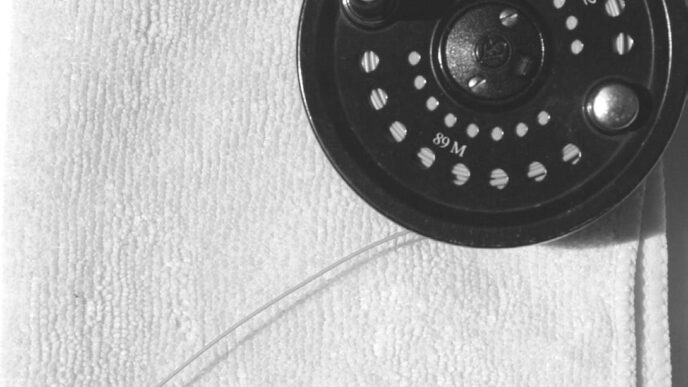My fascination with creeks began at an early age, when my dad would take me creekin’ on the tributaries of the West Branch of the Feather River above our home in Paradise, California, in search of wild trout. I had no idea that in doing so, he was training me for the big rivers that I would be fishing in my future. As a child, all I really wanted to do was explore and have fun in the creeks under the canopy of the oak trees and pines, hoping for a willing fish to take my dry fly. But Dad always had a plan and lessons for me to learn. The classic creeks of my youth included Deer Creek, Yellow Creek, the creeks of the Lake Almanor area, and most of the tributaries coming into the North Fork of the Feather River. One of the most important lessons I learned from my dad there was to appreciate small, wild trout. Big-fish fever can never ruin an angler whose love of fly fishing began under the canopy of the rich foliage on a creek.
Even now, some forty years later, I still take time to fish the creeks, where beauty and solitude harmonize with each other to the tune played by water running over polished granite. Fishing a small creek brings the same carefree attitude and lust for adventure that children have. Fishing small creeks is how I keep my sanity in this rat race of a world, escaping into the unknown in search of my happy place: pristine canyon water.
In Northern California, there are hundreds upon hundreds of creeks, from the valley floors through the rolling foothills to the crest of the Sierra and beyond. There is no way an angler can fish and explore all of them in a lifetime — so much water that it can be somewhat overwhelming to try to comprehend it all. Each creek is special, with its own personality, from a lush meadow setting with gliding flows to the rugged canyons, where the roar of white water echoes off the rock walls.
Exploring a creek is so much fun because it is a mission: researching the topo maps, then investigating it on the Internet by combing through pages of blogs and other fishy Web sites in search of a few clues to help you on your trip. But some of the best creek trips I’ve experienced also were conceived the night before around the campfire with a close fishing buddy. With the map on the picnic table, we would pick a general area, flip a coin, and the winner would close his eyes and place his finger on the map, picking the watershed closest to where the finger was placed.
For the last 18 years, I have concentrated on the small streams of central and eastern Plumas County. One look at a map of the area reveals dozens of fishable creeks. My absolute favorite streams in this region are Jamison Creek, located in the Plumas Eureka State Park, Gray Eagle Creek, and Frazier Creek. These three watersheds have one thing in common: secluded canyons with limited access. Accessing creeks of this type requires steep descents and, when the day is done, grueling climbs. The hiking is tough, and the canyon-water angler needs to be in good physical shape, with a clear understanding of basic outdoor skills. The rewards, though, are well worth the effort, leaving you with vivid memories of a special day.
The fish that inhabit the creeks of Northern California are mostly rainbows and browns, with a few exceptions, such as cutthroats and redband trout. The most beautiful trout I’ve ever caught have come from the small waters of the northern Sierra, fish with radiating color schemes and iridescent hues that sparkle like diamonds in the sunshine. A trophy fish will be a 12-incher, with the average trout ranging between 4 and 8 inches. These fish are extremely opportunistic, hitting your fly more than once and coming back again and again. With optimum conditions like these, fishing small creeks is perfect for beginning fly anglers, because everything is scaled down, providing a controlled environment: they’re hooking fish, gaining confidence, and learning the fundamentals needed to be successful in the future.
Fly selection is easy and as basic as can be. Presenting dry flies is usually your best approach. It’s also the most fun. Bushy, high-floating dries are best for presentations in the staircases of plunge pools and highly oxygenated water. My favorite patterns include the Royal Coachman, the Humpy in yellow, orange, black, and olive, the Elk Hair Caddis, simple sandwich foam hoppers, foam beetles, and ant patterns in black and red. Carry these flies in sizes 10 to 18.
When fishing creeks with deeper pools and pocket water, a dry-and-dropper combination is a great choice. Productive dropper nymphs include Copper Johns, caddis emergers, and Beadhead Flashback Pheasant Tails in sizes 14 to 18. When it comes to creeks, presentation outweighs having the right pattern.
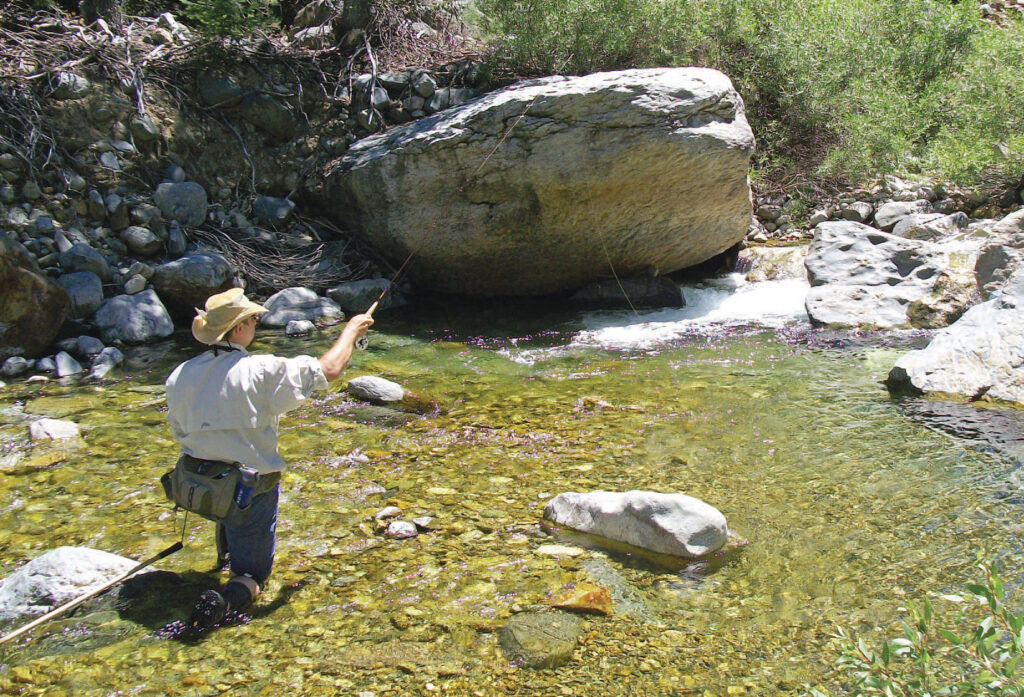
Watersheds that produce heavy snowmelt can become scoured, often leaving the resident trout with little in the way of aquatic insects to eat, and in these creeks, terrestrials are a very important food item. However, where the lower stretches of creeks flow into larger streams, this connection provides a wider variety of different species of aquatic insects. An intense Green Drake mayfly emergence right in front of you in a 10-foot-wide creek is quite a spectacle.
It’s best to downsize your equipment when choosing a rod for small waters. Medium-flex 2-weight to 4-weight rods 7 to 8 feet long are ideal. Hiking into remote sections of creeks involves scrambling, climbing, and bushwhacking. For this reason I bring “no-tears” tackle — you’re not going to cry when you snap or damage a low-cost rod. Reels should be strong to survive the abuse of being banged around on the rocks. Leave the fancy high-dollar reel at home. Floating weight-forward lines and short leaders to 7 feet are perfect. When fishing small creeks, there’s seldom need to cast far. Keep your selection of equipment simple.
When approaching small waters, it’s important to use stealth and the cover of the natural surroundings. Staying low and hiding behind large boulders or trees will allow you to get close to your quarry. When working upstream, take your time and move slowly. Wild trout in creeks are very spooky. My go-to cast for tight areas or sections of creeks with heavy brush is the bow-and-arrow cast. With a rod’s length amount of line and leader out of the rod tip, the angler pulls the line tight, loads the rod, aims, and releases the fly. It’s a simple and effective solution to making casts in small, tight spaces, but it takes some practice to master. Whether you are using a dry fly or a nymph, short-line presentations and high-stick drifts are the standard techniques for successfully fishing small water.
Where to look for native trout in creeks can vary depending on many different factors, including the time of day, hatch activity, and water levels. On many occasions, I have approached the calm tailout of a big pool where trout were sunning themselves in very skinny, very clear water — the fish seemed to be floating in air. Why they do this is a mystery to me, because they are so vulnerable to predators. A trout in this situation will spook easily when cast to and will race to the head of the run to obtain cover, also letting other fish know that danger is lurking downstream. But if you give the trout a few minutes of rest, they become at ease again. During bright, sunny conditions at midday, look for shadows next to larger rocks with plenty of depth. I call these areas “dark water,” and they often will hold larger trout, because they are the prime lies. These fish also like to hold near structure such as ledges and edges of subsurface rock formations.
One of the pleasures of fishing creeks is that they are most productive when the temperatures are just right, during the late spring, summer, and early fall. Wet wading is the way to go. Forget the waders — you’ll cook and become exhausted when overheated, making for a miserable day. I recommend quick-dry convertible pants, though, rather than shorts, for wet wading. You’ll get fewer scratches, cuts, and abrasions on your legs. A quick-dry long-sleeve fishing shirt with plenty of pockets for the minimal amount of terminal tackle you’ll need works great, too. Nippers, hemostats, dry-fly shake, your fly box, and some tippet is all you really need.
Footwear is of great importance, because boots need to be sturdy and able to withstand the rigors of tough and technical hiking. The soles of these boots should be a sticky rubber compound, because you will be on terra firma most the time, with minimal wading. Studs and polished granite do not mix. I found that out the hard way a few years ago with a busted chin and a bruised ego. Another option is using high-tech water shoes with good ankle support. They are much lighter and will not tire you out after a long day of boulder hopping. A functional hat and polarized glasses round out your attire. It’s important to wear colors that blend in with the area that you are fishing. I like gray pants to blend in with the boulders, a sky-blue shirt, and an olive drab camouflage hat.
On many of my deep-canyon excursions, I loop my route when possible. I park my vehicle in a central location and walk down the ridge before dropping into the canyon. Once I arrive at the creek, I work my way upstream, and when the day is done, I climb out of the canyon and walk back down to the truck. If you’re with a companion, you can leave one vehicle at your planned exit and drive your other vehicle to the bottom, at the start of your upstream adventure. Such shuttles require a little more planning, but can also save you some extra hiking time.
If you plan on going solo, it is wise to give a responsible person a detailed outline of your day, including what time to expect you back. One new safety tool I have purchased is an emergency locator beacon. With a push of a button, authorities are notified and can pinpoint your exact location. These beacons should be used only in life-or-death situations. However, my SPOT Gen 3 beacon also allows the user to text family and friends with messages that do not require immediate action from search and rescue. These beacons work where cell phones will not.
Creekin’ is a state of mind that allows you to experience the simplest style of fly fishing for trout in the most gorgeous settings. Ken Hanley puts it best when he quotes Webster’s at the start of his video Small Water Matrix. A matrix is something “from which something else originates, develops, or takes form.”That’s small creek fly fishing.



